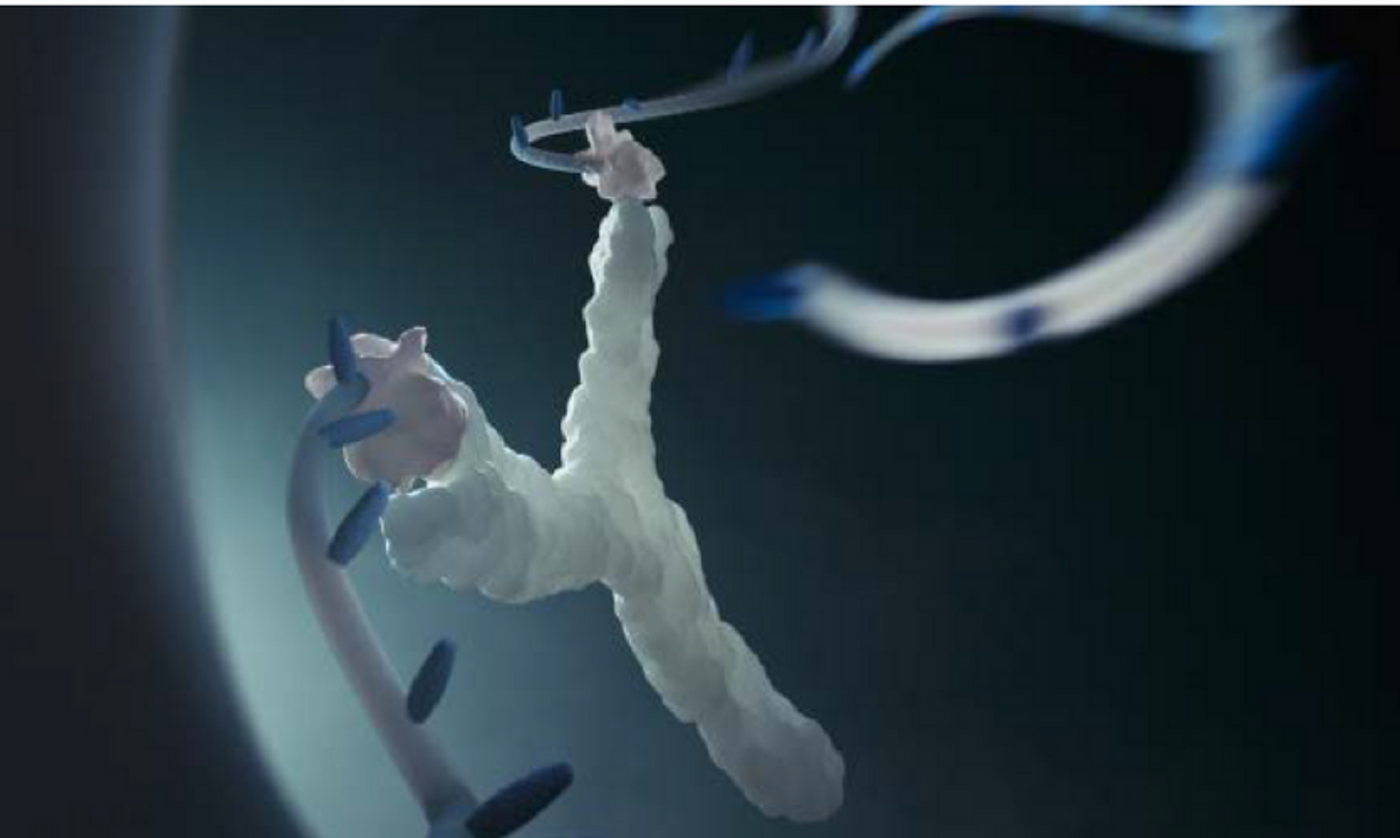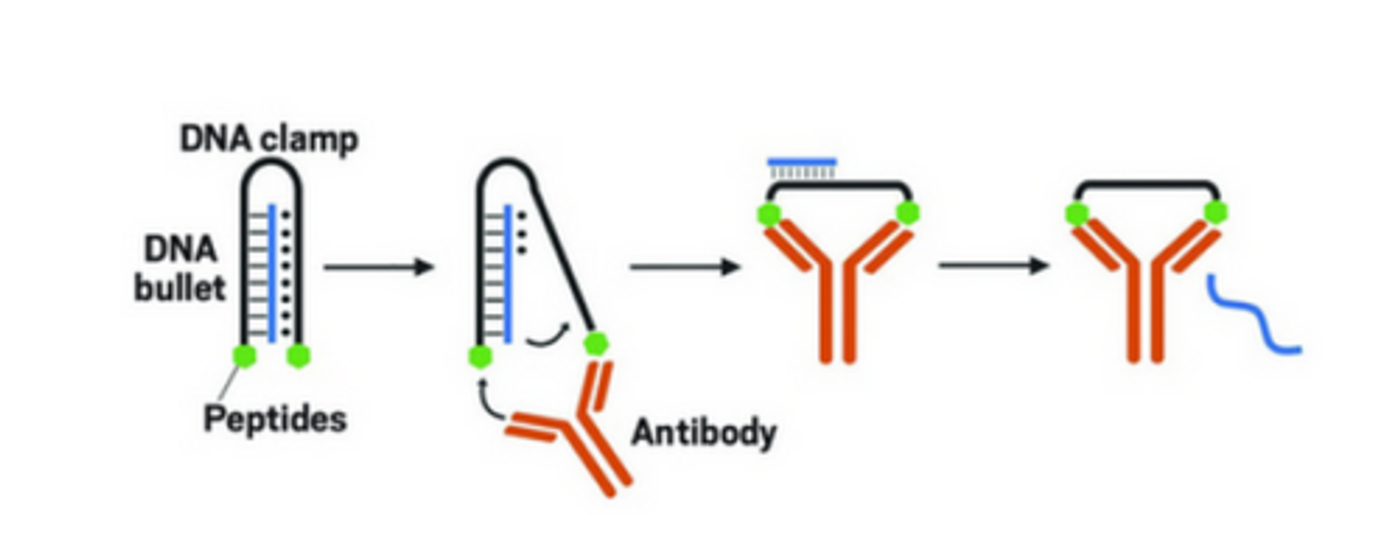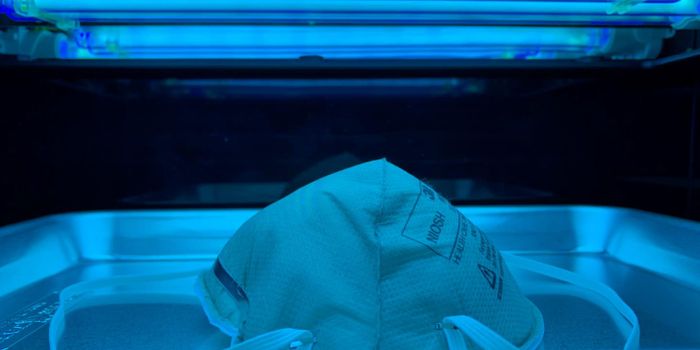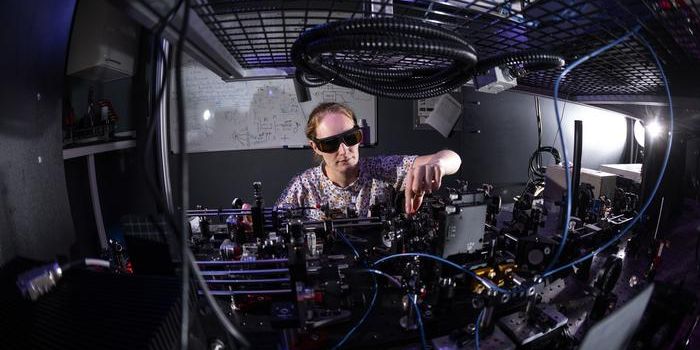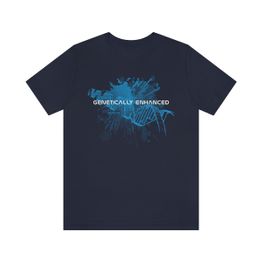A slingshot is often associated with a children’s toy and mischievous behavior. But now it might just become a new weapon to combat cancer. In an article published in Nature Communications (Nat. Commun. 2017, DOI: 10.1038/ncomms15150) this month, a team of Canadian and Italian researchers describe a nanosized DNA-based slingshot that can deliver drug molecules to targeted tumor cells.
Image credit: Marco Tripodi/Université de Montréal
Doctors nowadays have a diverse inventory of weapons to treat cancers. The treatments can be chemical based like chemo-agents; biological based such as antibodies, interferons, oncolytic viruses and vaccines; or radiation based like radiation therapy and radioembolization. Emerging trends in novel therapeutics emphasize the combination of different effecting agents, which can enhance the precision, efficacy and efficiency of treatment. Successful examples include radioimmunotherapy and antibody-drug conjugates.
This cancer-combating slingshot is made of two components: an antibody that is bound to the surface of a tumor cell and acts like a handle, and a synthetic DNA strand that can anchor to the antibody and function like a stretchy band to catapult a therapeutic molecule. The prevalent use of monoclonal antibodies makes them the ideal markers for target-specific drug delivery. DNA, other than just genetic code, can also be the perfect building material for miniature carriers because of their flexibility and base-pairing, helix-forming ability. Before releasing its cargo, the DNA strand is in a clamp-like formation with the drug molecule encapsulated in the middle. To insure its stability during transport, the drug molecule in this study, which is also a DNA strand, forms a triplex with its carrier clamp via Watson-Crick pairing on one side and Hoogsteen pairing on the other. Only after the peptide antigens at its ends are covalently bonded to the antibody on the tumor cell, does the clamp become loosened. The destabilization leads to the expansion of the DNA strand and eventually the release of the drug molecule. With this inexpensive and versatile platform, the team is looking forward to creating more slingshots to deliver target-specific therapeutic agents using DNA carriers.
Image credit: Nature Communications
Additional information:
http://www.cbc.ca/news/technology/slingshot-shoots-drugs-where-they-re-needed-1.4102165


-
MAY 07, 2024Is It Anti-RNP or Anti-Sm/RNP?
-
MAY 08, 2024Expand your Multiomic Capabilities with RNAscope™
- See More
-
APR 30, 2024Immuno-Oncology Virtual Event Series 2024
-
MAY 07, 20243rd International Biosecurity Virtual Symposium
-
MAY 23, 2024For the Love of Digital PCR 2024
- See More
